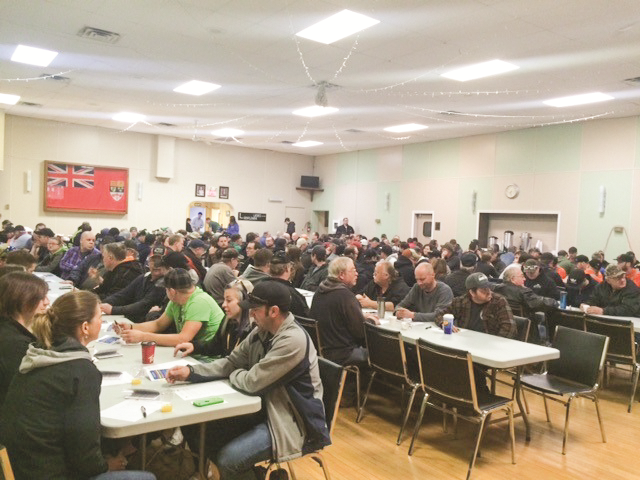It’s a partnership with safety as its main purpose.
The Government of Saskatchewan, in partnership with the Saskatchewan Common Ground Alliance (SCGA) and Sask 1st Call, planned a series of 28 breakfast seminars across the province with the assistance of corporate sponsors and members, with the focus trained on safety procedures out in the field.
April is acknowledged as Safe Digging Month, so the seminar topics generally address issues associated with construction and excavation around already buried infrastructure.
“Each year in Saskatchewan, too many incidents of line contacts with buried utilities occur. These happen because a step in the safe-digging process was missed: a free line locate may not have been request; dig area weren’t properly identified; safe-digging practices were not followed when working near underground lines,” said Don McMorris, minister of crown investments “Taking time to manage each step is vital to ensure the safety of all workers on site as damage prevention is a shared responsibility.”
This year’s breakfast seminar in Estevan was staged in the Legion Hall on April 12 with 193 people involved in the contract and construction industries registering. A similar meeting in Oxbow the next day, attracted another 80 registrants, said Chantal Bourassa, public awareness co-ordinator for the south prairies region for Enbridge Pipelines (Saskatchewan) Inc., who helped organize the breakfasts and presentations.
This year’s presentation looked at white lining, said Bourassa. “Before a contractor starts digging and during their pre-excavation meeting, they need to confirm what infrastructure exists within their “white line” project area.”
The seminars also looked at tailgate meetings that could be held to discuss work plans, daylighting and ways to excavate safely. They also looked at emergency response planning.
This was the 27th annual contractor safety presentation and breakfast program.
Those attending the breakfasts traditionally are construction workers, supervisors, business owners, rural municipality employees and administrators, emergency responders and anyone who is associated with ground disturbance or working near overhead electrical services.
Contractors and homeowners can now use Google Maps to request a line location on site — from their phone and virtually white line their work area. They can also look at their requests and see the subscriber companies that were notified for each dig site and request s relocate if the locate markings are faded.
“With the busy construction season just around the corner, we want to remind everyone to please take the time to click, call or tap before they dig,” said Barb Tchozewski, manager of Sask 1st Call. Whether the person is a homeowner building a new deck or a contractor excavating a basement, they are urged to remember to include Sask 1st Call as part of their safe digging plan, Tchozewski said.
Once a customer requests a line locate Sask 1st Call notifies underground infrastructure owners of potential ground disturbance work occurring near their facilities. These companies require a minimum of two full workings days’ notice to locate and mark their underground lines at no charge, allowing the digging part of the project to proceed safely.
Failing to do so can often lead to significant consequences, the least of which may be project delays, let alone damaged lines, equipment disruption, property damage, environmental disturbances or serious personal injury or even death.
“Thanks in part to efforts from SCGA and Sask 1st Call, safety initiatives from our Crown utilities, and increasing awareness from the digging community, I’m happy to say we’ve started to see a slow but noticeable trend in the right direction when it comes to underground infrastructure damage,” said Daryl Posehn, executive director of the SCGA.




